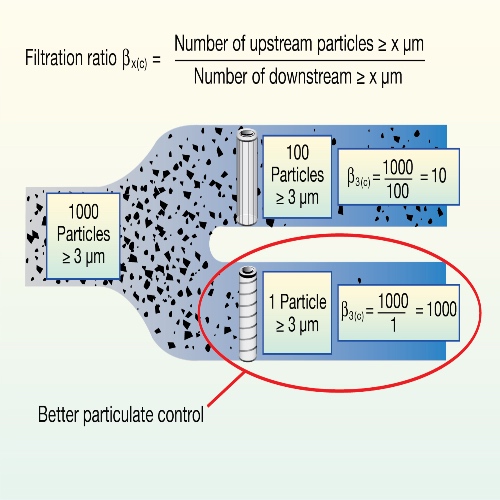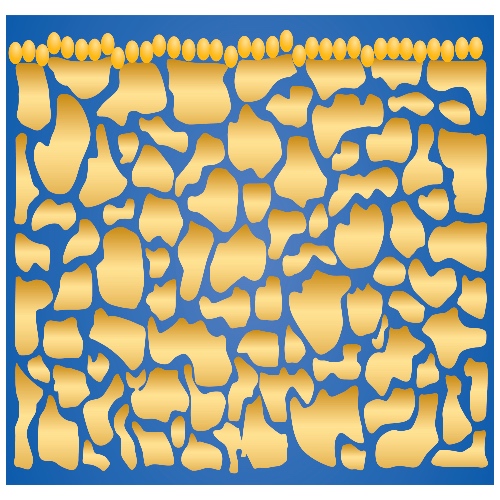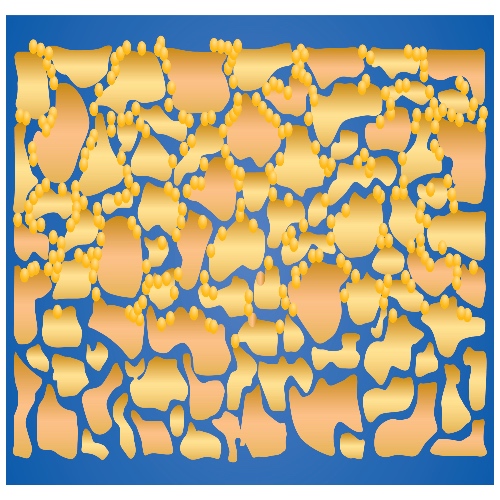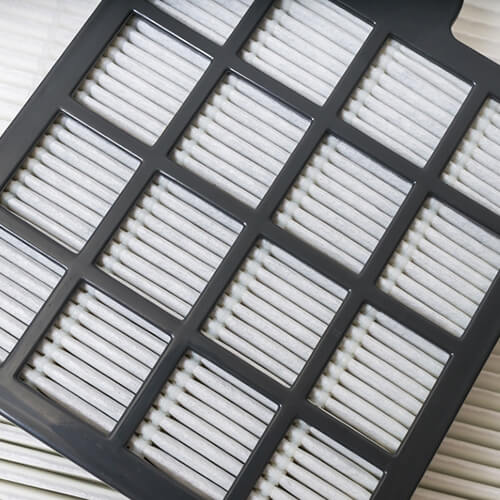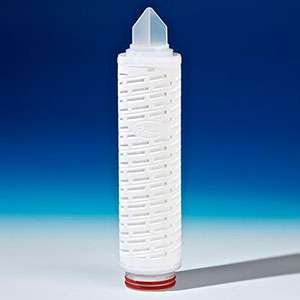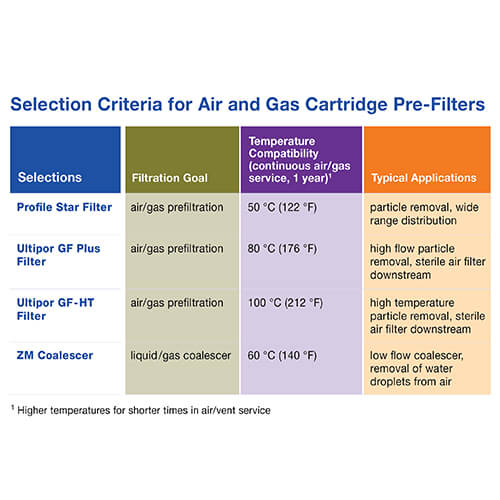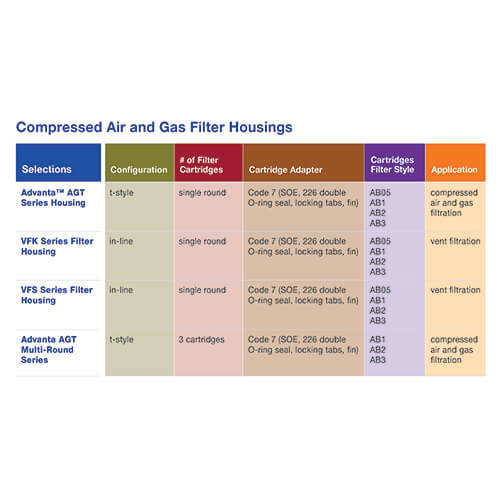Treat Air and Gas with Prefiltration
Ensure a long service life of final air and gas filters
To ensure long service life of final air/gas filters, it is important that compressed air or gases are treated with air prefiltration before final filtration to remove particles that would otherwise prematurely block the final filters. Air pre-filtration should occur as close as possible to the final filters to capture contaminants from the upstream compressed air distribution system.
Air prefiltration is commonly done using disposable depth filters. Depth filters are characterized by a media construction that combines a tortuous flow path for contaminants in air streams with increased depth or thickness of material. They are most often comprised of a three-dimensional matrix with polymeric, woven or blown fibrous materials of construction such as polypropylene, polyester, nylon, cellulose and glass fibers. Pleated formats increase surface area for higher dirt holding capacity.
For Excellent Air Prefiltration Filters Should Feature:
- High particle removal efficiency to ensure long life of downstream final air filters
- High dirt-holding capacity to ensure long air prefilter life
- Low resistance to airflow to enable compact sizing and energy savings
Common terms used to loosely define filter particle removal efficiency are “nominal” and “absolute”. However, while “nominal” always means a lesser removal performance than “absolute,” there is no standard industry definition of what these terms mean.
As these terms do not necessarily specify true particle removal performance, it is important to define particle removal efficiency based on particle counts, or as the Beta Ratio, to quantify and compare filter performance.
Particle removal efficiencies are expressed, based on a given particle size, as the relationship between an upstream and a downstream particle count at a given micron rating (x) or larger, expressed as a percentage, or also expressed as a Beta ratio at the given micron rating. The Beta ratio defines exactly what filter performance is expected. For effective air prefiltration, it is best to select a filter with a particle removal efficiency of 99% or higher (Beta 1000 or Beta 5000) because this affords the highest possible protection of downstream final air filters. (For a detailed description about particle removal efficiency ratings, please see Pall technical bulletin FBTANOMABSEN.)
High dirt-holding capacity results from a high filter voids volume throughout the depth of the filter media. High voids volume also lends itself to providing lower resistance to airflow, expressed as the relationship between airflow rate and clean pressure drop.
It is also important that air pre-filters feature a fixed pore structure, ensuring that retained contaminants do not unload even under rising or fluctuating pressure conditions. There are inexpensive filters with fibrous media of non-fixed pore structure, which tend to flex or unload retained particles, display channeling, or even exhibit media migration. Examples of such filters are string wounds, fibrous, non-fixed media filters, or low-end melt blown polypropylene filters, which tend to display variable, non-reproducible filtrate quality and may have arbitrary removal performance ratings.
Depth filters for air prefiltration are available in a wide variety of formats, such as cartridge filters, HEPA/ULPA filters, and others. The selection of appropriate air prefiltration and suitable sizing is driven by filter type/configuration, required removal performance, gas type, and process parameters, including gas temperature, flow rate, and supply pressure.
Pall offers the following different options for air and gas prefiltration, depending on the specific customer requirements. The Profile® Star pleated depth filter is excellent for applications where there are a wide range of particles. Alternatively for higher temperature applications, Ultipor® GF Plus and Ultipor GF-HF filters provide a good solution due to their high voids volume and low pressure drop. Finally, if no air dryer is installed, a liquid/gas coalescer can be installed to remove humidity from the air. See Pall’s options for air and gas pre-filtration in the table below.
Pall also offers a variety of housing options designed specifically for air and gas applications. The AdvantaTM AGT housings series are sanitary housings designed with a low-pressure drop. Features of this advanced sanitary housing, such as the surface finish, steam sterilizability, and ease of filter integrity testing have been tuned to match today's exacting requirements both technically and economically. VFK and VFS Series filter housings are specifically designed for venting applications in the food and beverage industry. The in-line flow pattern of these housings ensures minimized pressure drop and user-friendly filter cartridge change-outs. They can be equipped with a variety of air/gas filter cartridges to address the various needs of the industry, efficiently protecting products and processes from airborne contamination. See the table below for Pall’s air, gas and vent housing.
Find the right solution for your needs by speaking to one of our experts.
-
Particle Removal_FBTANOMABSEN
Download:




